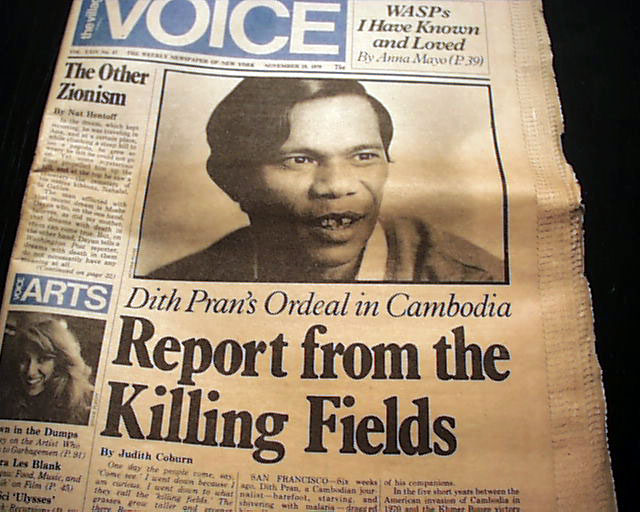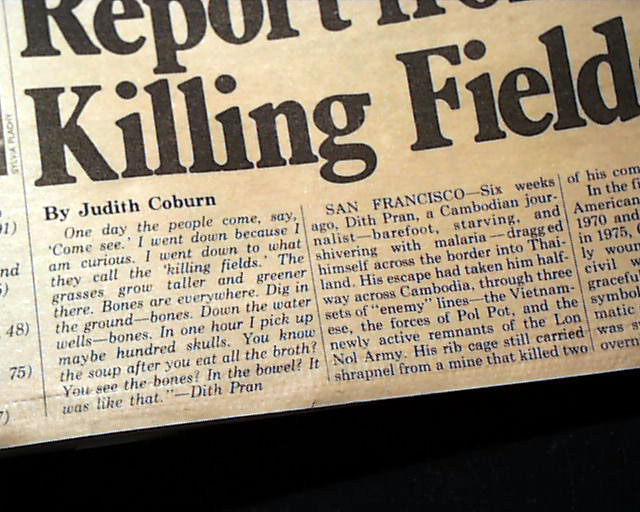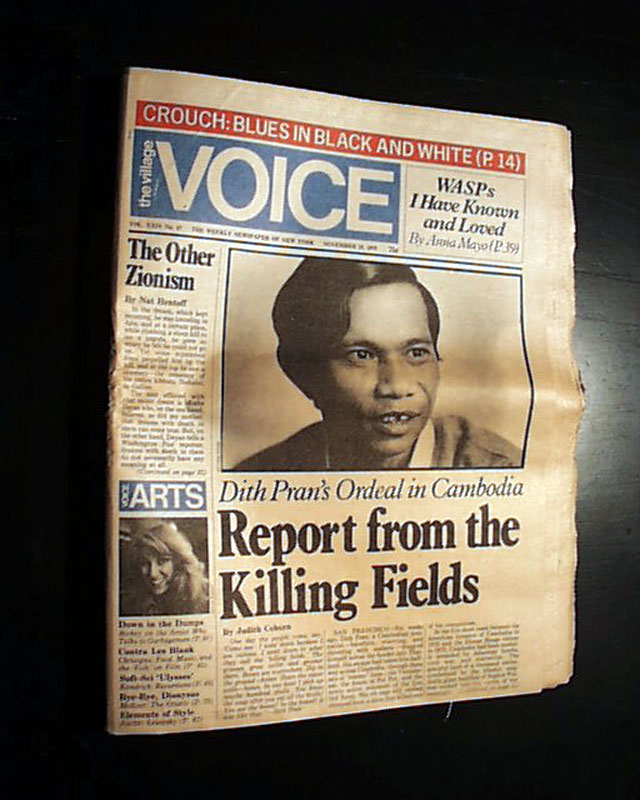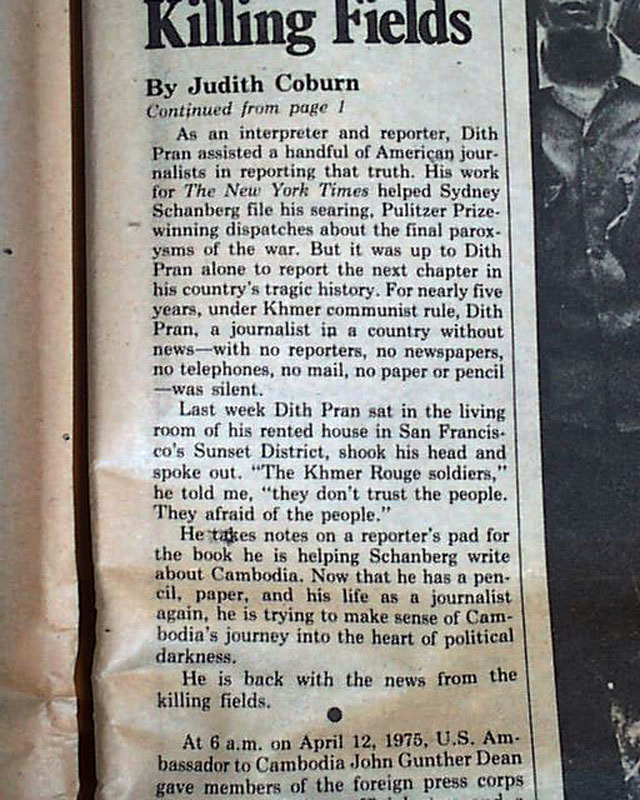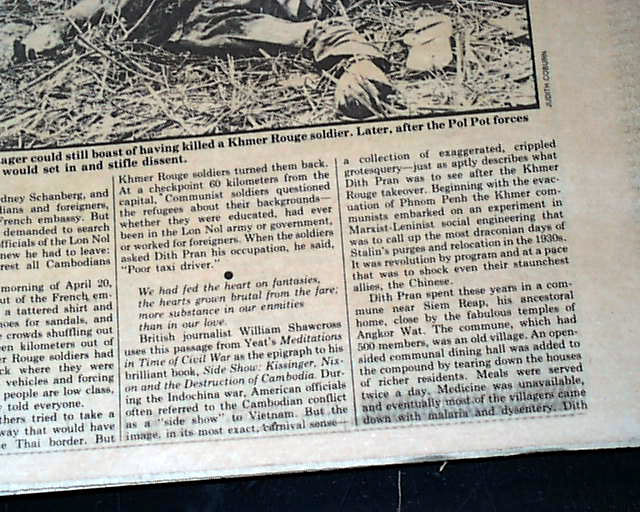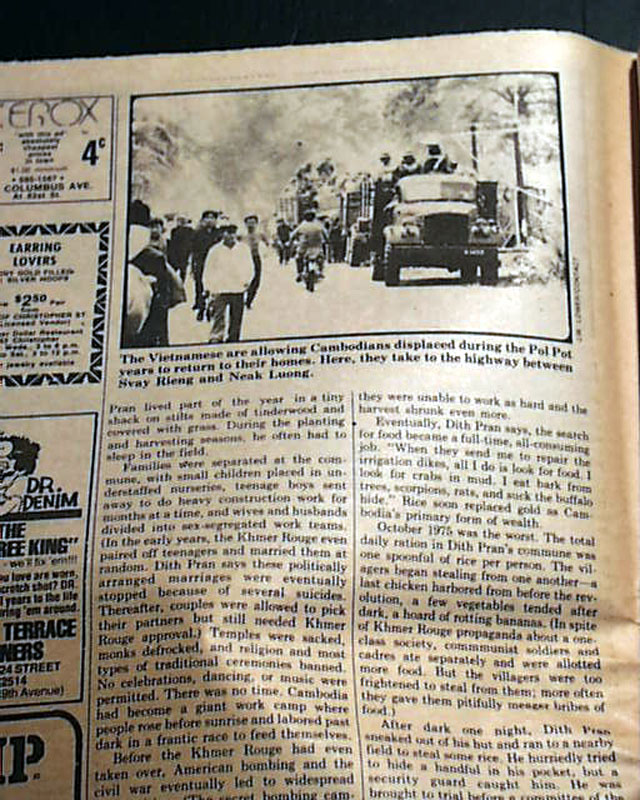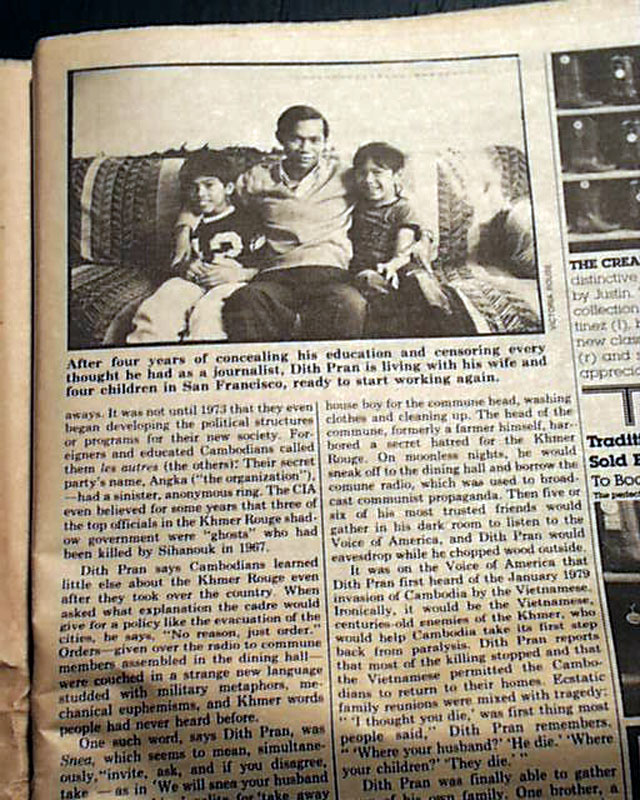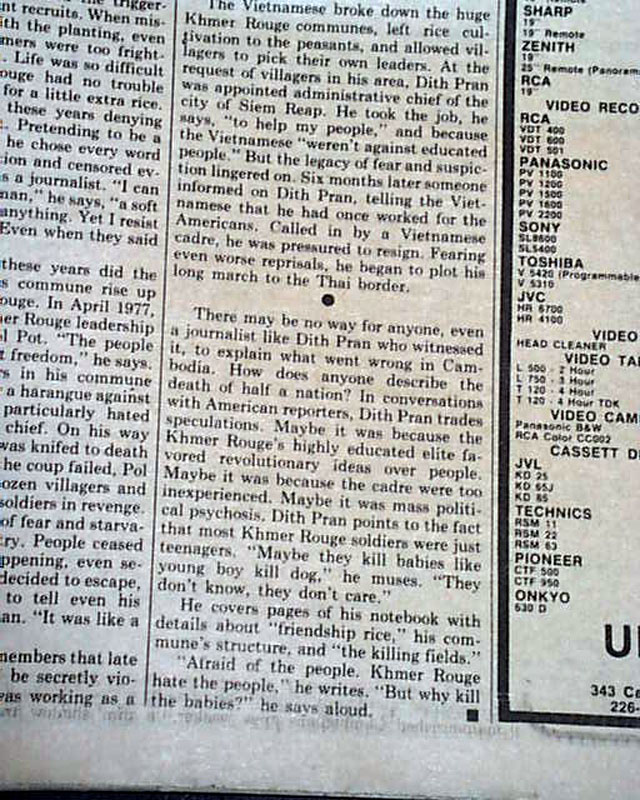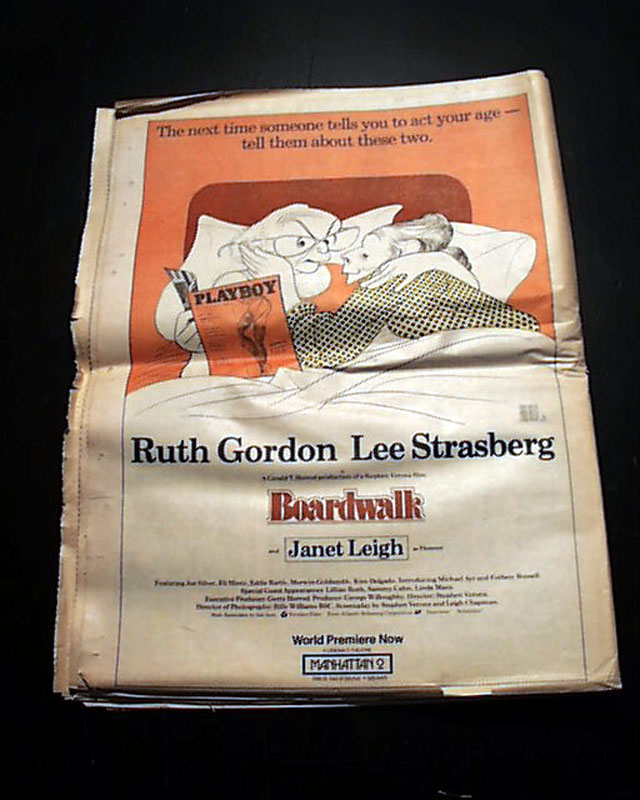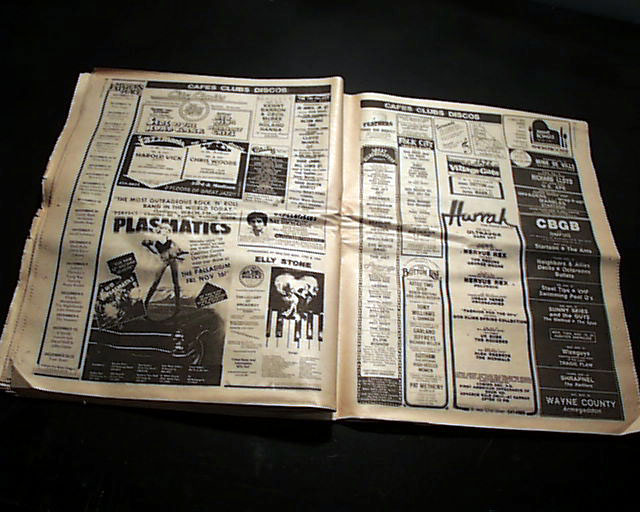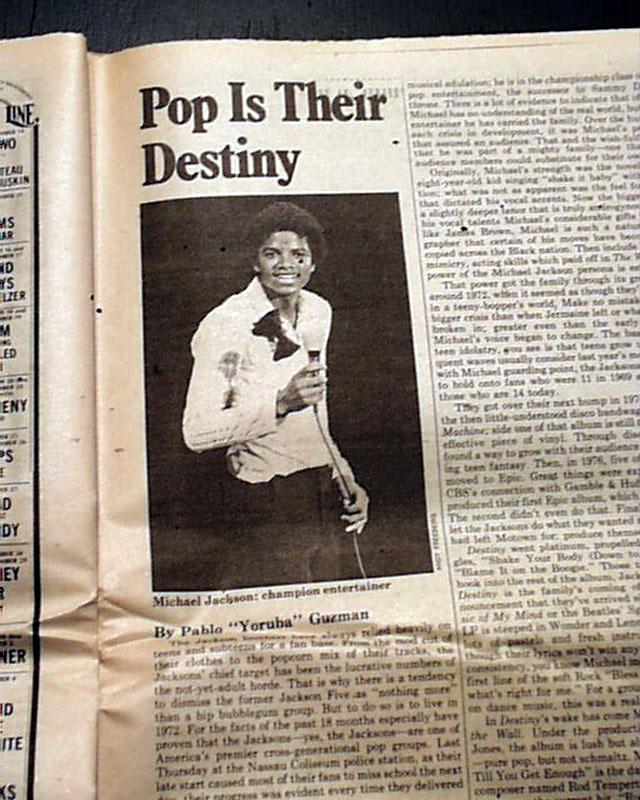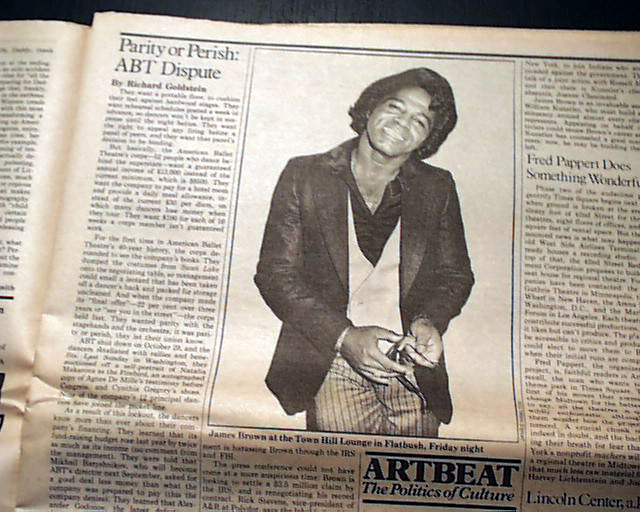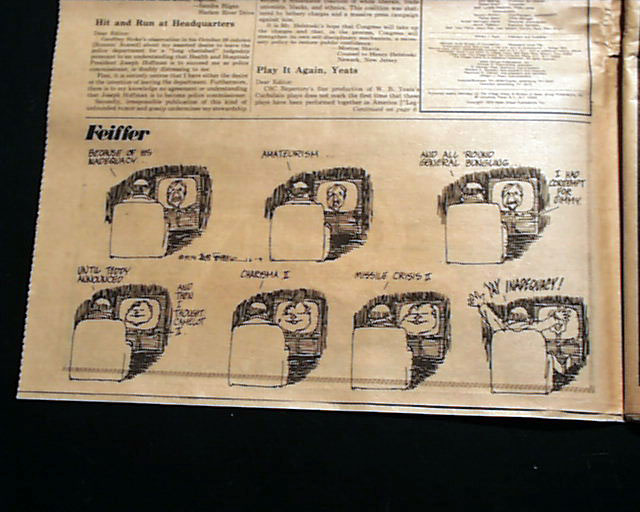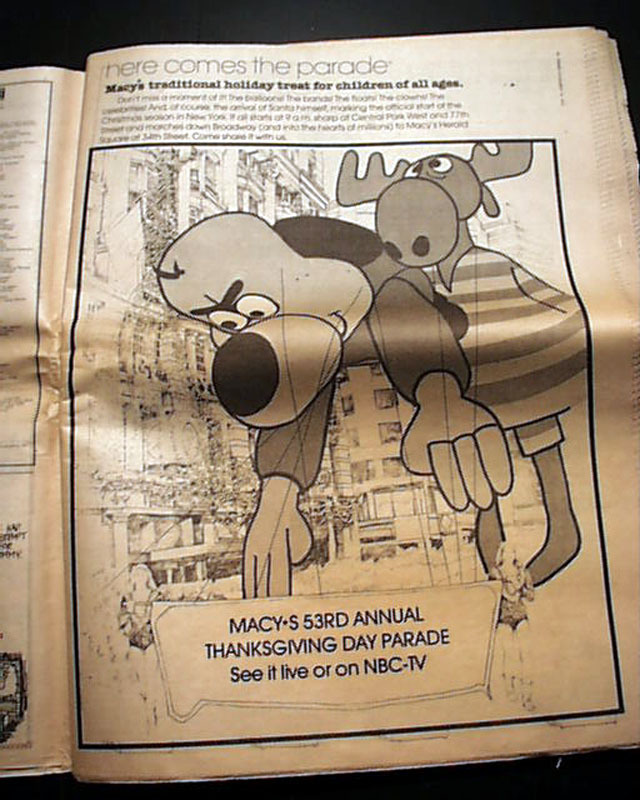Home >
1979 Dith Pran and the "Killing Fields" of Cambodia...
1979 Dith Pran and the "Killing Fields" of Cambodia...
Item # 716738
November 19, 1979
THE VILLAGE VOICE (weekly), Greenwich Village, New York City, Nov. 19, 1979
* Cambodian photojournalist Dith Pran editorial
* His ordeal escaping the "Killing Fields" of Cambodia
Starting on the front page is a editorial on Dith Pran and his escape from the "Killing Fields" of Cambodia with heading: "Dith Pran's Ordeal in Cambodia; Report from the Killing Fields" with photo of Pran.
This editorial continues on multiple inside pages with a few more related photos. See images for portion of the text.
AI notes: Dith Pran was a Cambodian photojournalist and survivor of the Khmer Rouge genocide who helped expose the horrors of the Killing Fields to the world. Working as an interpreter for New York Times journalist Sydney Schanberg during the Cambodian Civil War, he was left behind when the Khmer Rouge took power in 1975. He endured four years of forced labor and starvation, surviving by posing as an uneducated peasant. After escaping to Thailand in 1979, he reunited with Schanberg and moved to the U.S., later working as a photojournalist and human rights advocate. His story inspired the 1984 film The Killing Fields, and he is credited with coining that now widely known term.
I suspect this to be an extremely rare item because there was really no reason to save it at the time.
The Village Voice was an American counterculture newspaper known for being the country's first alternative newsweekly. It introduced free-form, high-spirited, and passionate journalism into the public discourse - a tradition it maintained throughout its 60+ year history. It is quite common to find great political cartoons, satirical cartoons and articles, thought-provoking editorials, and ads and reviews for both concerts and theater productions - both on and off Broadway. Many iconic writers and musicians credit their appearance in The Village Voice for at least a portion of their success.
Complete in 136 pages, one fold across the center, nice condition.
Provenance: This issue comes from The Village Voice's own archives, part of their in-house collection used to create their digital archive.
Alert: Many issues of The Village Voice contain articles and/or photos which some consider offensive, and are certainly inappropriate for children. If purchasing, please do so with discretion.
Category: The 20th Century


